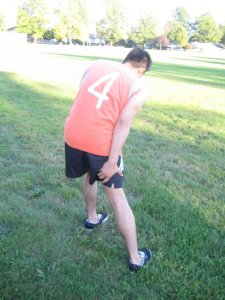A hip fracture is similar to a broken bone. For older people, breaking a hip means a major change in life. There is a need of surgery and takes a year to recover, but activity and physical therapy can help return the strength and mobility back to normal. Most people sustain a hip fracture near the upper part of thighbone or femur and also occur where the thighbone fits into the joint of the hip. Once an individual is involved in a vehicular accident or fall, there is a possibility of a hip fracture. If any symptoms of pain or discomfort occur, it is best to seek immediate medical care. While on the way to the hospital, you can provide measures to ease the discomfort. You can learn more about these measures by enrolling in a course on first aid today.
Causes of hip fractures
- It can be caused by falls and is usually common in people who are 65 or older. As the person grows older, the bones will lose some strength and can easily break even with just a minor fall.
- It can be caused by a bicycle or vehicular accidents or other sports injury

Some factors that can increase the risk for hip fracture include the following:
- Being a female
- Being thin or tall or have family members had fractures in life.
- Insufficient supply of calcium and Vitamin D which are needed to maintain strong bones.
- Lack of exercise such as walking that helps keep the bone strong
- Smoking
- Have certain medical conditions that cause dizziness or problems with balance, as well as conditions such as arthritis that interferes with steady and proper movement.
- Taking medications that are used to treat asthma or COPD.
Symptoms of hip fracture
- Severe pain in the hip or the lower groin area.
- Difficulty in putting weight on the leg.
These symptoms are common after a fall, but if he/she has very thin bones from osteoporosis or other problem, it could cause a hip fracture without falling. Sometimes, some people will only have thigh or knee pain and can still walk.
Treatment and home remedies
- If the person is not breathing and there is no pulse, start cardiopulmonary resuscitation or CPR.
- Help the individual lie on his/her back and tie the legs together at the ankle and knee. In some cases, the legs maybe straight or bent.
- Protect the leg with a stiff padding such as a waddled-up blankets or towels and keep in place with heavy objects. Make sure that it should extend above the hip and below the knee.
- Watch out for symptoms of shock such as glazed eyes, sweating, pale and moist skin, rapid and shallow breathing and dizziness.
- Apply a cold compress on the affected area in order to reduce swelling and pain. This should be done before seeking medical help.
- Use a walking aide such as a cane or walker in order to avoid any stress on the joints during activities.
Preventing hip fracture by exercises such as Tai Chi
- Tai chi helps in improving balance control in the form of shifting of weight, functional balance, coordination and posture.
- Performing Tai chi exercises can strengthen the muscles and promotes flexibility without exacerbating conditions such as arthritis. The stretching along with the poses helps in increasing flexibility.